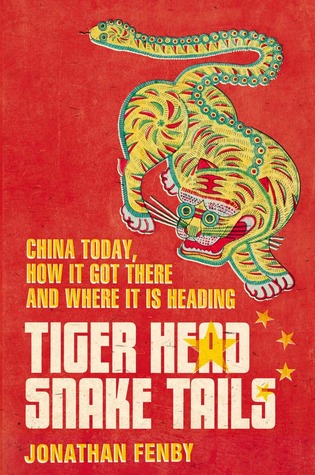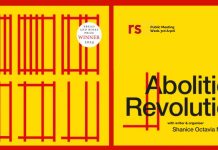Charlie Hore offers some suggestions to help understand what is happening in the world’s largest country
China has hardly been out of the headlines in the last few months. In August, the second stock market crash in two months sent shockwaves around the world financial system. China’s government had taken panic measures after the first crash to prevent a further one, and their failure seemed to show that they were losing their grip.
A few days later, the devaluation of the Chinese currency sparked further anxieties – this time, ironically, because it showed the extent to which the government is still in control of the economy, and how much impact its decisions have on the rest of the world.
The horrific explosion in the northern city of Tianjin gave the outside world a glimpse of the health and safety conditions prevailing in so much of Chinese industry. It came as a stark contrast to the military parade to mark the end of the Second World War a few weeks later, which seemed to confirm the image of China as the world’s new superpower.
What to read to better understand? I have picked out five books to recommend which both cover broad areas of recent history and are written for the general reader.
Scattered Sand
 Hsiao-Hung Pai is a socialist journalist originally from Taiwan. Her Scattered Sand (Verso, 2012) is the product of two years travelling around China listening to migrant workers. Their voices resound off almost every page, giving a marvellous sense of how China’s boom feels to those whose work has produced it. She also includes a chapter on migrants in Britain, building on her previous book Chinese Whispers (Penguin, 2008), which has important insights for current debates.
Hsiao-Hung Pai is a socialist journalist originally from Taiwan. Her Scattered Sand (Verso, 2012) is the product of two years travelling around China listening to migrant workers. Their voices resound off almost every page, giving a marvellous sense of how China’s boom feels to those whose work has produced it. She also includes a chapter on migrants in Britain, building on her previous book Chinese Whispers (Penguin, 2008), which has important insights for current debates.
That view from below is integrated into an account of China’s recent development, which encompasses the strengths, stresses and weaknesses of the economy and avoids simplistic conclusions. Above all, she presents migrant workers as actors in their own right rather than as victims, highlighting growing militancy while recognising the huge obstacles to organising posed by both the state and employers.
Against the Law
 Ching Kwan Lee’s Against the Law (University of California, 2007) is a little older, but remains a ground‑breaking classic in China studies, the first comprehensive overview of the state of the working class and class struggle since the era of Mao Zedong. Perry Anderson compared it to EP Thompson’s The Making of the English Working Class,1 which is something of an exaggeration, but gives a sense of its importance.
Ching Kwan Lee’s Against the Law (University of California, 2007) is a little older, but remains a ground‑breaking classic in China studies, the first comprehensive overview of the state of the working class and class struggle since the era of Mao Zedong. Perry Anderson compared it to EP Thompson’s The Making of the English Working Class,1 which is something of an exaggeration, but gives a sense of its importance.
The growth of China’s export industries in the 1990s came at the same time as mass closures of state‑owned factories, and Lee begins with the huge battles waged by some of those workers. The fights weren’t over the closures, but about management’s failures to pay redundancy. She details how the workers won, with the central state taking over the responsibility for redundancy payments in the early 2000s.
Lee contrasts these “rustbelt” struggles with the “sunbelt” – new exporting factories in China’s southern coastal provinces – and shows workers there waging offensive as well as defensive strikes. More recent books on migrant workers’ struggles have challenged her analysis,2 but this remains essential reading for anyone who wants to understand the Chinese working class struggles today.
China’s new consumers
 China’s new consumers (Routledge, 2006) was Elisabeth Croll’s last book, and is a remarkably detailed account of the changes in living standards for both workers and peasants. She anatomises the recent rise in inequality, noting that “China remains pyramid‑shaped with small numbers of people in high‑income groups, very large numbers of people in the lower strata, and fewer numbers with intermediate incomes than might have been expected”. 3
China’s new consumers (Routledge, 2006) was Elisabeth Croll’s last book, and is a remarkably detailed account of the changes in living standards for both workers and peasants. She anatomises the recent rise in inequality, noting that “China remains pyramid‑shaped with small numbers of people in high‑income groups, very large numbers of people in the lower strata, and fewer numbers with intermediate incomes than might have been expected”. 3
She also qualifies the oft quoted claim that China’s economic reforms have taken hundreds of millions of people out of poverty by noting that they had not come very far out: “One of the most important features of China’s rural society is the large numbers of farmers and their families who continue to hover around and just above the poverty line”. 4
Over the past ten years China’s rulers have been trying to increase consumption to provide a more reliable base for economic growth, and this book goes a long way towards explaining some of the problems with that strategy… while recognising the real growth that has occurred.
Tiger Head, Snake Tails 
Jonathan Fenby’s Tiger Head, Snake Tails (Simon & Schuster, 2012) is the best recent overview of the Chinese economy written for general readers. It’s useful book because he combines a deep knowledge of China with a cynicism towards simplistic explanations. The book is organised around contrasting the “tiger head” (China is the biggest, fastest, etc.) with “snake tails” such as poverty and corruption. As he notes: “Popular disillusion with the way that China lives now is heightened by the trust deficit that stretches beyond politics to safety issues, food quality, the environment and standards of medical care”. 5
The Mandate of Heaven
Nigel Harris’ The mandate of Heaven (Haymarket, 2015) was originally published in 1978, the year that the “reform era” started. China has changed out of all recognition since then, but it remains an essential book for understanding Mao’s China, and why his successors chose a very different path for development.
 The book was a product of a very different world, when for most of the left Mao’s China was something to defend. It’s thus written in a polemical style quite different from the other books here. In 1978 it was still necessary to write sentences such as: “The workers must be told that the factories belong to them, since there is no way that they will discover this in their daily experience”. 6
The book was a product of a very different world, when for most of the left Mao’s China was something to defend. It’s thus written in a polemical style quite different from the other books here. In 1978 it was still necessary to write sentences such as: “The workers must be told that the factories belong to them, since there is no way that they will discover this in their daily experience”. 6
The book argues for a view of 1949 as a nationalist rather than a socialist revolution, and for Mao to be seen as building a state-dominated form of capitalism, in which workers and peasants continued to be exploited. Harris backs this up with detailed accounts of workers’ and peasants’ lives (as detailed as the sources then available allowed), as well as showing the lack of equality and democracy.
Today it’s pretty obvious that what dominates China is a form of capitalism in which the state plays a key role, but Harris’s perspective is invaluable for understanding the continuities as well as the changes since 1978.
All of the books I’ve recommended here will give you a better idea of the complexities of China today, and why its future is so uncertain, but Scattered Sand and The Mandate of Heaven show socialist history at its best, combining detailed analysis with a political perspective that illuminates an exceptionally complex subject.
1) Perry Anderson, “Sinomania,” London Review of Books, vol 32, no. 2 (28 January 2010).
2) I reviewed several of these in “China’s Changing Working Class”, International Socialist Review, #95 (Autumn 2014).
3) China’s new consumers, p 102.
4) China’s new consumers, p 136-7.
5) Tiger Head, Snake Tails, p 300.
6) The Mandate of Heaven, p 143.
This article originally appeared in the Autumn 2015 issue of the rs21 magazine



















